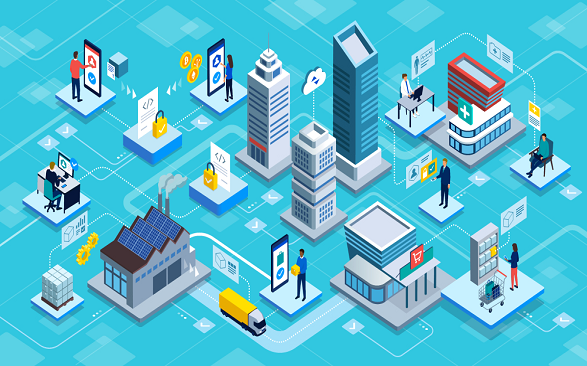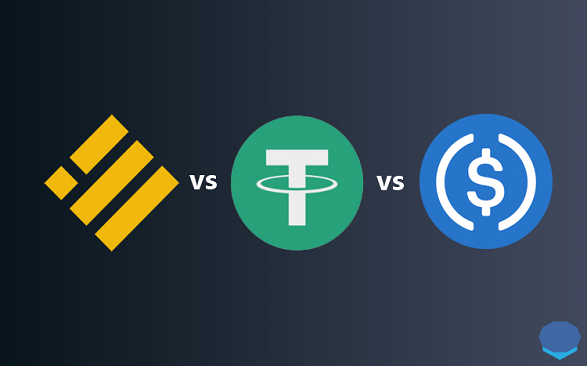Blockchain technology is gradually transforming various industries, including finance, gaming, music, and arts. The technology, which became popular following the advent of the first mainstream cryptocurrency bitcoin (BTC), has the potential to impact more industries in the future.
One of the most promising use cases of blockchain technology is asset tokenization. This refers to the process of converting tangible or intangible assets into digital tokens that can be stored on a blockchain network and traded on digital asset exchanges. Notably, these digital tokens represent fractional ownership or a specific value of the underlying asset.
Asset tokenization also entails the conversion of ownership rights of a real-world asset such as real estate, artwork, or commodities into digital tokens on a blockchain. It has the potential to revolutionize the way assets are bought, sold, and transferred. By tokenizing real-world assets on blockchains such as Ethereum, Cardano or Solana, their ownership can be recorded on an immutable, secure ledger, and can also be transferred and traded in a decentralized manner.
In this article, we will explore the concept of asset tokenization, its benefits, and its implications for various industries.
Read also: What is Blockchain Technology? Meaning, Types, and Use Cases
What is Asset Tokenization?
Asset tokenization is the process of representing a tangible or intangible real-world asset, such as real estate, artwork, commodities, or intellectual property as digital tokens on a blockchain. Tokenization enables the breakdown of ownership of a real-world asset into smaller units, often referred to as tokens.
These digital tokens are created using smart contracts such that the ownership rights of a particular asset are clearly defined. In other words, each token is uniquely identifiable and holds the characteristics and rights associated with the asset it represents. Asset tokenization has many advantages, including fractional ownership. With fractional ownership, investors with low budgets are able to purchase and trade smaller portions of real-world assets.
What are the benefits of asset tokenization?
Asset tokenization is a compelling use case of blockchain technology. This is because it brings several advantages and opens up new possibilities in various industries. Here are some key benefits of asset tokenization:
- Increased Liquidity: Tokenizing assets enables fractional ownership. This means that high-value assets can be divided into smaller units. This fractional ownership makes it easier for investors to buy and sell assets, even with low budgets, thereby increasing liquidity in traditionally illiquid markets like real estate or fine art. This liquidity can unlock value and provide opportunities for asset diversification.
- Enhanced Accessibility: Asset tokenization can democratize access to investments that were previously restricted to only a few people. By converting assets into digital tokens on a blockchain, a larger number of investors can participate in ownership, potentially unlocking investment opportunities for individuals who may not have had access before.
- Improved Efficiency and Transparency: Blockchain technology enables transparent and immutable records of ownership and transactions. By leveraging the distributed ledger innovation introduced by blockchain technology, asset tokenization can streamline processes, reduce paperwork, and provide a transparent audit trail. This increased efficiency and transparency can lead to faster and more secure transactions, build trust among participants as well as reduce the risk of fraud.
- Fractional Investing: Tokenized assets allow investors to diversify their portfolios by investing in a variety of assets with smaller amounts of capital. This fractional investing enables individuals to spread their investment risk across multiple assets, potentially enhancing their overall investment strategy. Fractional investing also improves access to investment opportunities since anyone can participate with any amount of money without the requirement of having to buy a minimum number of shares or stocks.
- Cross-border and low-cost transactions: Another notable benefit of asset tokenization is the simplification of cross-border transactions by removing intermediaries and reducing the complexities and costs associated with traditional financial systems. In other words, asset tokenization enables direct peer-to-peer transfers of real-world assets, reducing the need for intermediaries and minimizing costs. This is unlike traditional asset transactions which often involve multiple intermediaries, leading to delays and high fees. Notably, with asset tokenization, transactions are executed on the blockchain.
- Enhanced Security: Blockchain’s cryptographic protection and consensus mechanisms provide a high level of security for tokenized assets. Also, the decentralized nature of blockchain reduces the risk of fraud, tampering, or unauthorized changes to ownership records.
Read also: What is Smart Contract and Its Use Cases?
How can industries leverage asset tokenization?
Asset tokenization has the potential to positively disrupt various industries, including real estate, art, finance, and supply chain management.
In real estate, asset tokenization can enable fractional ownership of properties, allowing investors to own a share of high-value properties and receive a proportional rental income. This opens up real estate investment opportunities to a broader investor base.
The art market is another industry that can benefit from tokenization. By tokenizing artwork, ownership can be shared, and the artwork can be easily traded. This allows art enthusiasts to invest in fine art without the high barriers to entry.
In the financial sector, asset tokenization can revolutionize the trading of traditional securities. Tokenized stocks, bonds, and derivatives can be traded anytime and anywhere on blockchain-based exchanges, enhancing liquidity and reducing settlement times. Additionally, it enables small businesses to raise capital through initial coin offerings (ICOs), providing access to a wider investor pool.
Also, the supply chain management industry can leverage asset tokenization innovation to improve the efficiency of services. By tokenizing goods and tracking their movement on the blockchain, players in the industry can ensure maximum transparency, traceability, and authenticity. This in turn helps to reduce the issue of goods counterfeiting, enhancing consumer trust.
Read also: What are the top 5 blockchain projects you should know?
Conclusion
Amid increasing regulatory concerns and technical challenges, asset tokenization seems to be gaining traction given its potential to reshape the future of ownership and investment. By converting assets into digital tokens, ownership can be fractionalized, liquidity can be increased, and transaction costs can be reduced. This innovative approach to ownership also has the potential to democratize investment opportunities and unlock the value of illiquid assets.
Investors and consumers generally should however beware of fraudulent and scam asset-tokenization projects in the space. Also, apart from bad actors, investors and consumers should also do their own research in order to ensure that they do not end up with a weak project or one without a strong use case. More often than not, you may eventually discover that the so-called tokenized asset or digital token was all buzz without substance.
Read also: What is Blockchain Technology? Meaning, Types, and Use Cases
Credit: Ndianabasi Tom
A crypto journalist and content writer who has been talking about cryptocurrency and blockchain technology since 2018, Ndianabasi is a Writer at Crypto Asset Buyer (CAB).
Discover more from Crypto Asset Buyer
Subscribe to get the latest posts sent to your email.




